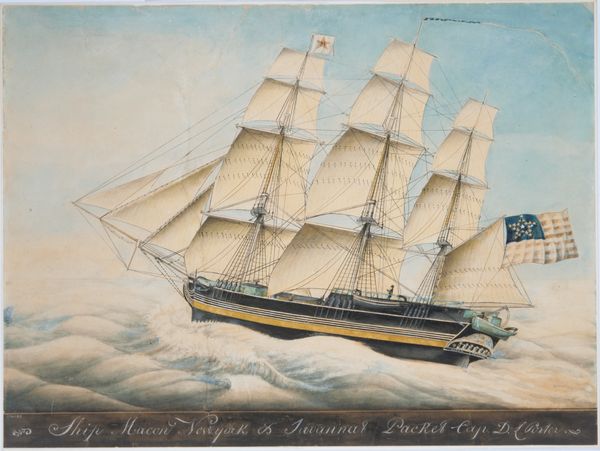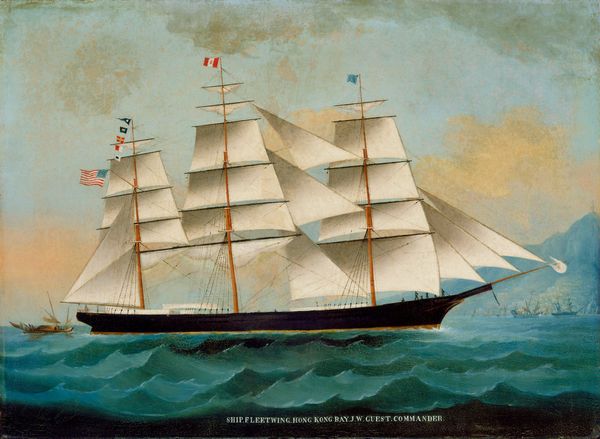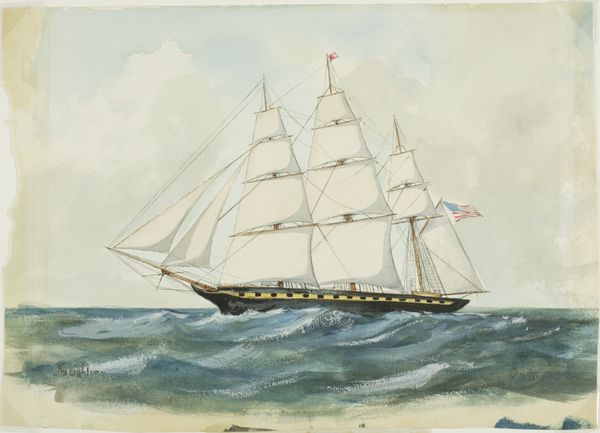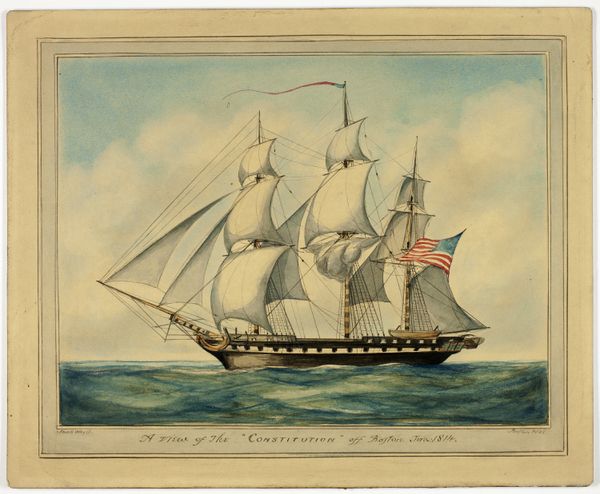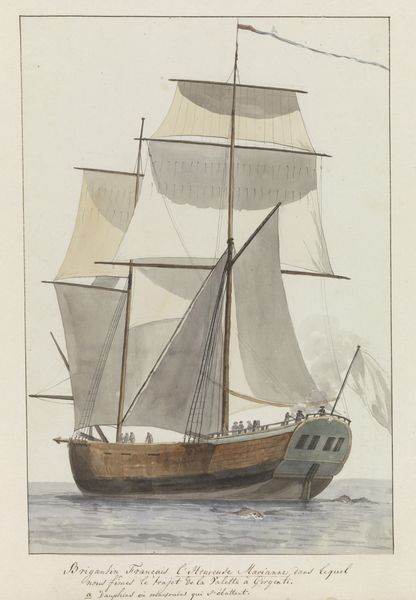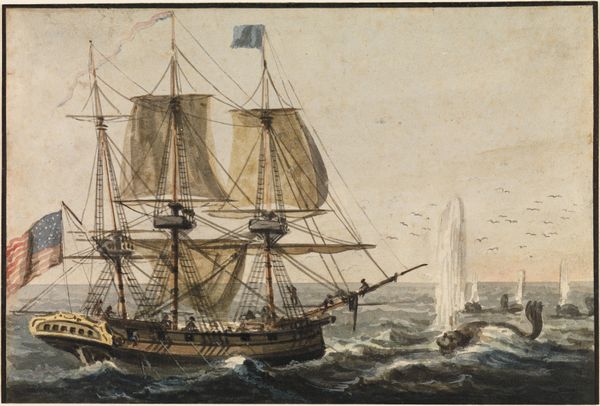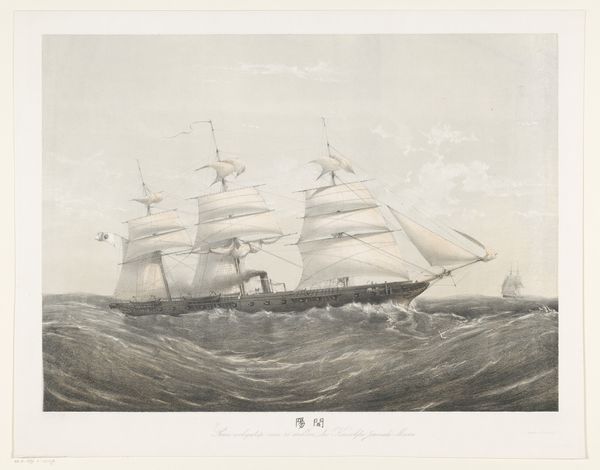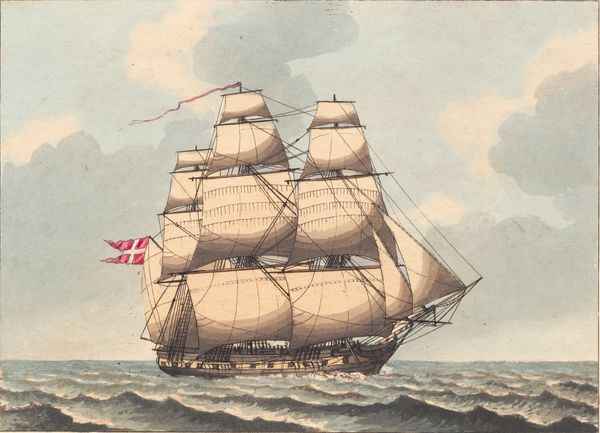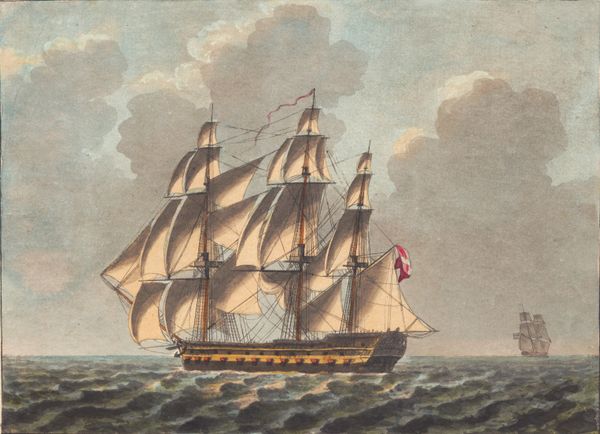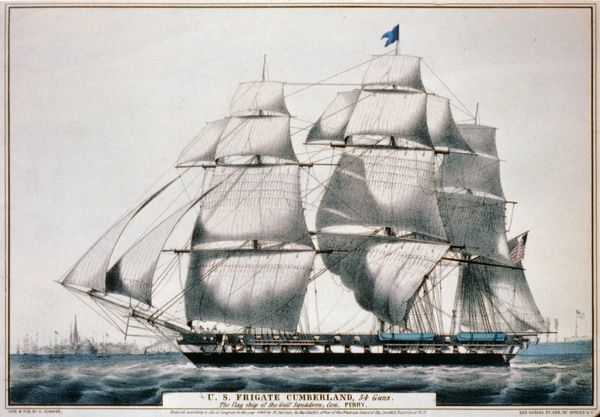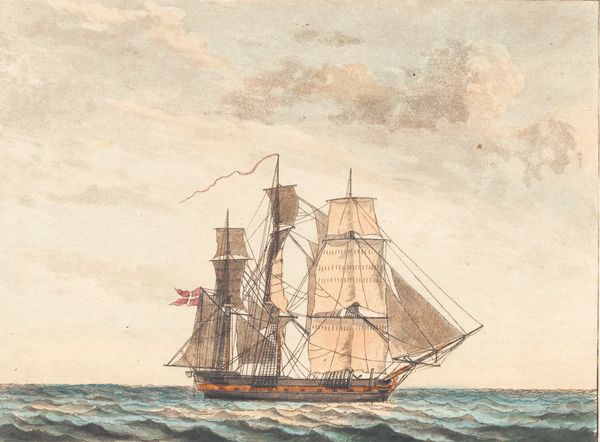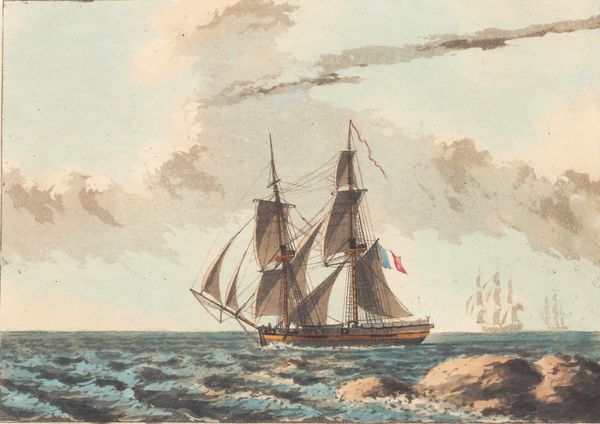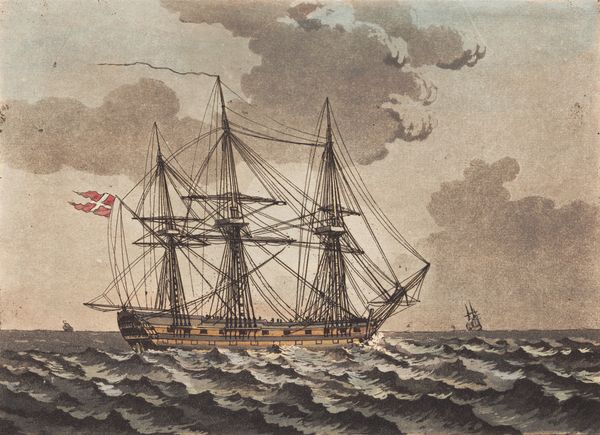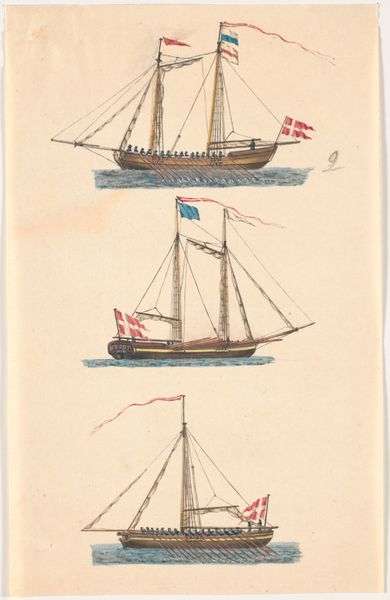
drawing
#
drawing
#
aged paper
#
toned paper
#
water colours
#
antique
#
coloured pencil
#
coffee painting
#
watercolour bleed
#
watercolour illustration
#
watercolor
#
warm toned green
Dimensions: overall (approximate): 54.5 x 69.6 cm (21 7/16 x 27 3/8 in.)
Copyright: National Gallery of Art: CC0 1.0
Curator: I’m immediately struck by the delicacy of the lines in this work; there’s a precision that feels almost photographic, yet rendered entirely by hand. Editor: Precisely! We’re looking at “The Tern Schooner ‘Minnie G. Loud’,” a drawing by Louis Roux from 1876. He seems to have used watercolor and colored pencil on, what appears to be, aged paper. Curator: The materiality certainly lends to the artwork's charm. But observe the artist’s hand; he’s painstakingly depicted the rigging, each sail, and the very structure of the ship, inviting viewers into its geometry. Notice also, if you will, how Roux strategically used perspective, angling the vessel perfectly. Editor: The material processes here are key. I wonder about the production context: Was Roux commissioned? A shipbuilder himself, meticulously documenting vessels? The subtle variations in line weight and the layering of color must have been a labor-intensive process, a dedication of both time and craft. It speaks of trade and movement too. Curator: Context certainly enhances the narrative, though formally speaking, the flags become compositional accents – the cool blues and reds adding vibrant, dynamic energy atop the sails. I see this almost as an exercise in contrasts – between the rigid structure of the ship and the implied motion of the water. Editor: Right, consider also, how these kinds of maritime vessels connected different economies in that era. Beyond art historical considerations, they had complex economic impacts and served a critical function. This drawing then, becomes an object that encapsulates both the beauty and functionality of human-made instruments. Curator: The function remains elegantly transformed. It offers a sense of idealized grandeur. And yet, in the detail of the hull and rigging, a fascination for the formal beauty of maritime engineering. Editor: Exactly. Appreciating both its formal structure and the hands-on production helps illuminate what these ships actually did and where the “Minnie G. Loud” traveled to support networks and livelihoods in her day. Curator: Indeed. The object invites us into contemplation on geometry and maritime power. Editor: And what material traces are left by labor, use, and ultimately, our looking.
Comments
No comments
Be the first to comment and join the conversation on the ultimate creative platform.
